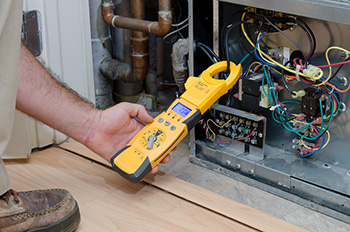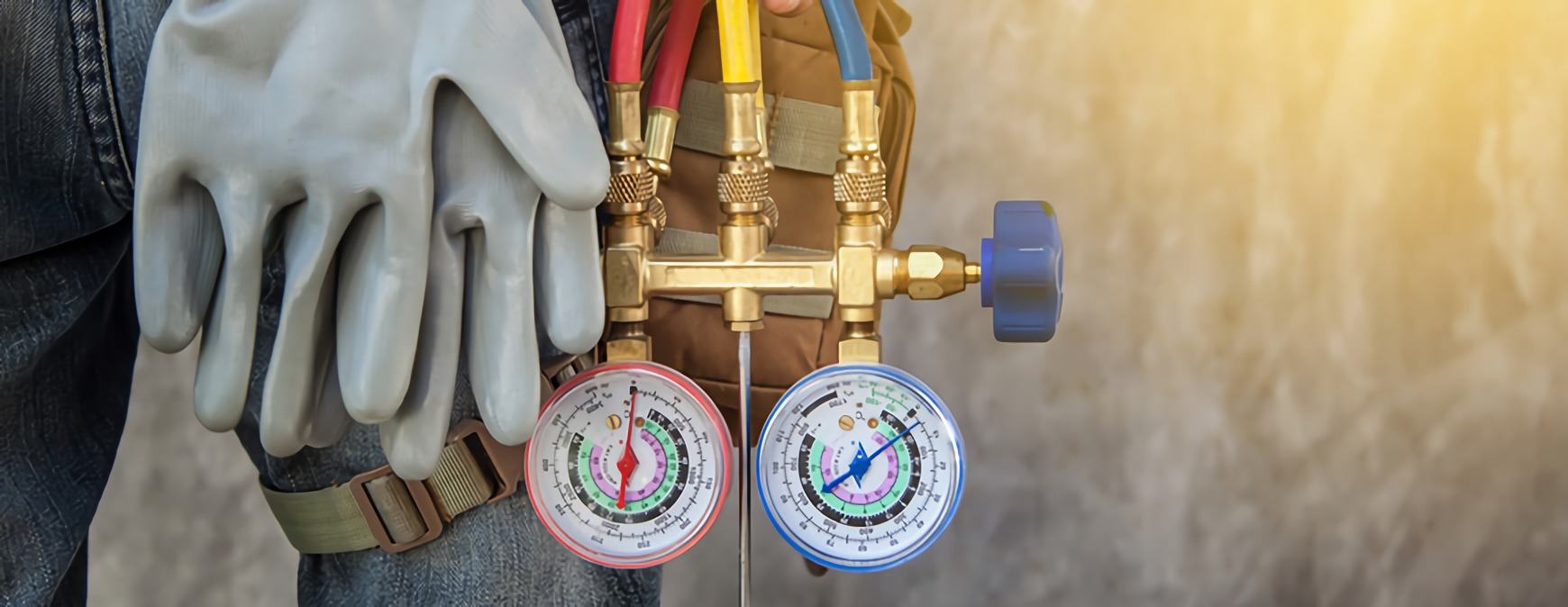RSI is a Great Training Option for Everyone
Learn more about how we can prepare you to advance your career.
HVAC/R technicians use a variety of instruments to test whether or not equipment is working correctly or in accordance with the manufacturer’s specifications. Such instruments can measure temperature, pressure, and electricity, as well as detect refrigerant leaks and gas leaks. To ensure these instruments are providing accurate readings, technicians or manufacturers must test and calibrate them. Learn more about HVAC/R tool calibration in this article. 1
What Is Tool Calibration?
Calibration is the process of testing the accuracy of the readings of a measurement instrument and making any necessary adjustments if the instrument isn’t working properly. 2 For example, technicians can test the accuracy of a thermostat. Since water boils at 212°F and freezes at 32°F, placing the heat-sensing portion of the device into a pot of boiling water or ice-water can show if it’s working correctly. If readings are off, the HVAC/R technician could make some mechanical adjustments to correct the inaccuracy.
What Types of Instruments Can HVAC/R Technicians Calibrate?
In most cases, an HVAC/R technician can test if a measurement instrument is providing accurate readings, but the tech will not always be able to correct problems with the instrument. Some measurement instruments must be sent to the manufacturer to be calibrated.
Temperature-Measuring Instruments
- Resistance Thermal Devices: Technicians can test them for accuracy but must replace them if they are out of tolerance. Tolerance is the acceptable range of readings a device may have before it is considered inaccurate.
- Thermocouples: Technicians can test thermocouples for accuracy but cannot repair them.
- Bimetallic Devices: Technicians can test and adjust these instruments to an extent. Repeated mechanical manipulation can cause them to permanently give inaccurate readings.
Pressure-Measuring Instruments
- Electronic Pressure Gauges: Technicians can test electronic pressure gauges against known pressures. These devices must be replaced if they are out of tolerance.
- Mechanical Pressure Gauges: These are the types of gauges found on refrigerant manifold test sets. Technicians can test and manually adjust them to ensure they’re working correctly.
Vacuum-Measuring Instruments
- An HVAC/R technician can test and manually calibrate u-shaped vacuum instruments with moveable scales.
Electronic Vacuum Instruments
- Analog: Technicians can easily test and calibrate these instruments.
- Digital: These instruments only need to be calibrated once before they leave their manufacturer.
Electricity-Measuring Instruments

- Ohmmeters, power meters, voltmeters, phase angle meters, and ammeters are examples of electricity-measuring instruments that HVAC/R technicians can test but not calibrate. They must be sent to the manufacturer for calibration.
Refrigerant Leak-Detection Instruments
- Analog: Technicians can test and calibrate simple analog refrigerant leak-detection instruments. They usually can’t adjust complex ones.
- Digital: Technicians can check the accuracy of these devices but can’t calibrate them.
Flue Gas Analysis Instruments
- While technicians can test both analog and digital flue gas instruments, they cannot calibrate them. They must be sent back to the manufacturer. Ensuring these instruments provide correct readings is crucial because heating systems can leak deadly gases and endanger customers.
Evaluating Performance
Measurement instruments are crucial to HVAC/R technicians’ ability to evaluate the performance of equipment. When they’re not working correctly, technicians may spend more time troubleshooting system problems or miss them altogether. Calibration can help techs make sure their instruments are working correctly and, in turn, do their jobs more efficiently. As you progress in your HVAC/R classes, you’ll likely learn more about this important process. 3
Get Started on the Path to a New Career
Fill out our form to learn how we can help you change your life.
Additional Sources
1 – Title: Fundamentals of HVAC/R; Authors: Carter Stanfield and David Skaves; Air-Conditioning, Heating, and Refrigeration Institute; Second Edition; Textbook page 134
2 – http://www.dictionary.com/browse/calibrate
3 – Title: Fundamentals of HVAC/R; Authors: Carter Stanfield and David Skaves; Air-Conditioning, Heating, and Refrigeration Institute; Second Edition; Textbook page 131-136
This blog has been labeled as archived as it may no longer contain the most up-to-date data. For a list of all current blog posts, please visit our blog homepage at https://www.rsi.edu/blog/




